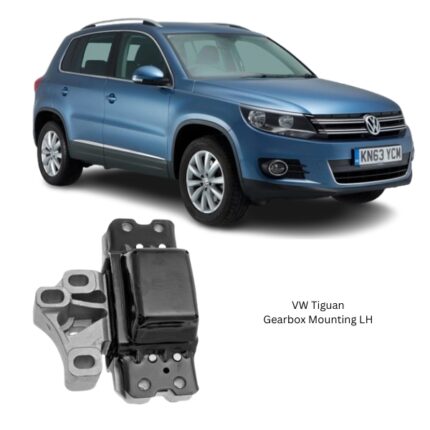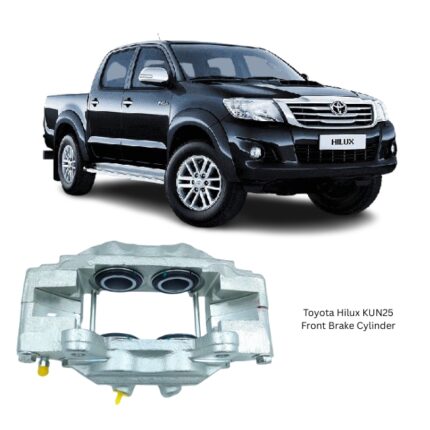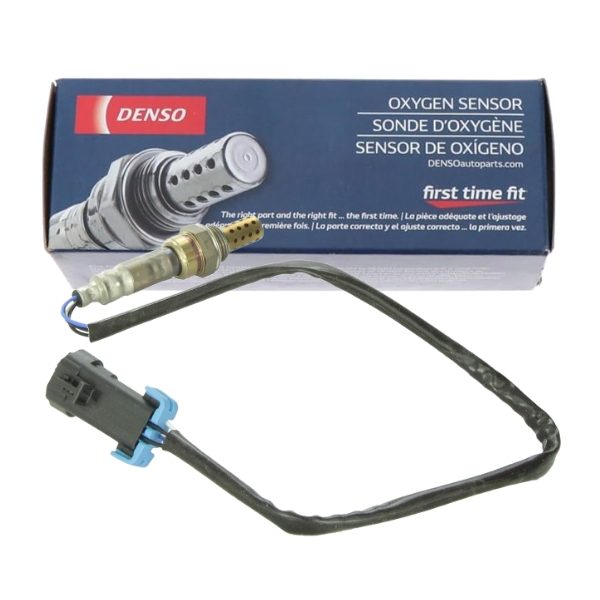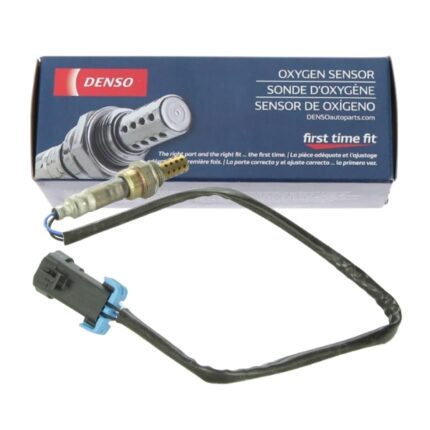Get Denso Oxygen Sensor (Air and Fuel Ratio Sensor) 234-4673 in Kenya
The Denso Oxygen Sensor, also commonly referred to as the Air and Fuel Ratio Sensor, is a highly precise electronic component designed to measure the concentration of oxygen in a vehicle’s exhaust gases. It plays an essential role in monitoring and maintaining the correct air-fuel ratio for optimal combustion, engine performance, fuel efficiency, and emissions control. Often located upstream of the catalytic converter, this sensor is an integral part of the engine management system, ensuring the vehicle operates within environmental and mechanical standards.
Purpose and Functionality
The core function of the Denso oxygen sensor is to detect the level of oxygen in the exhaust gases that exit the engine and to send this data to the Engine Control Unit (ECU). This information is used by the ECU to fine-tune the air-fuel mixture being sent into the engine’s combustion chambers. The target is to achieve the stoichiometric ratio—which is approximately 14.7:1 for gasoline engines (14.7 parts air to 1 part fuel)—for ideal combustion.
There are two main types of oxygen sensors:
-
Zirconia Oxygen Sensors (Switching Type): These sensors generate a voltage based on the difference in oxygen levels between the exhaust and the outside air.
-
Air-Fuel Ratio Sensors (Wideband Sensors): These provide a more precise reading over a wide range of oxygen concentrations, allowing for better fuel control.
The Denso Air and Fuel Ratio Sensor is of the wideband type, making it more accurate and efficient than traditional switching-type sensors.
Key Components and Construction
Denso’s oxygen sensors are known for their advanced design, durability, and high performance. The typical structure of a Denso air-fuel ratio sensor includes:
-
Sensing Element (Zirconia or Titania): The core element that reacts with oxygen and generates an electric signal. Denso uses a planar-type zirconia element which ensures fast activation and accurate sensing.
-
Protective Shielding: A stainless steel cover protects the sensor from road debris and contaminants.
-
Heater Element: Integrated ceramic heaters allow the sensor to quickly reach the optimal operating temperature (around 600°C), ensuring real-time data transmission even during cold starts.
-
Housing and Connector: Durable outer housing made to withstand high temperatures and vibration. The electrical connector ensures reliable communication with the vehicle’s ECU.
Denso sensors are manufactured to OEM specifications and are commonly used by automakers worldwide.
How It Works
The Denso Air and Fuel Ratio Sensor works on the principle of oxygen ion conductivity. Here’s a step-by-step breakdown:
-
Exhaust gases pass over the sensor’s ceramic element.
-
The sensor measures the difference in oxygen levels between the exhaust gas and the ambient air.
-
The sensing element produces a signal based on this difference—either in voltage or current.
-
The ECU receives this signal and adjusts the fuel injection timing and quantity accordingly.
-
Real-time corrections are made to maintain the ideal combustion conditions, enhancing performance, fuel economy, and emissions control.
Unlike traditional O2 sensors that simply indicate “rich” or “lean” conditions, wideband sensors like Denso’s can provide a continuous and accurate air-fuel ratio reading, allowing for much finer tuning.
Applications and Compatibility
Denso oxygen sensors are used in a wide range of gasoline engines, including:
-
Passenger cars
-
SUVs
-
Light commercial vehicles
-
Hybrid vehicles
They are typically installed:
-
Upstream (pre-catalytic converter): To monitor raw exhaust gases directly after combustion.
-
Downstream (post-catalytic converter): To monitor the efficiency of the catalytic converter.
For air-fuel ratio sensors, the upstream position is the most critical, as it allows real-time adjustments to the combustion process.
Advantages of Denso Air-Fuel Ratio Sensors
-
Precision Control: Offers a much broader range of oxygen detection than narrowband sensors, allowing more accurate control over fuel injection and timing.
-
Fast Response Time: Denso’s integrated heaters ensure rapid sensor warm-up, improving fuel economy and emissions immediately after engine start-up.
-
Durability: Built to withstand extreme heat, vibration, and contamination.
-
Improved Emissions Control: Ensures the engine remains within emission standards by maintaining optimal combustion.
-
Enhanced Fuel Efficiency: By ensuring the right air-fuel mix, the engine burns fuel more efficiently, reducing waste.
-
Plug-and-Play Design: Denso sensors are designed to fit seamlessly into the original wiring and mounting locations without modification.
Signs of a Failing Oxygen Sensor
Over time, oxygen sensors wear out or become contaminated due to carbon buildup, oil residue, coolant leaks, or exposure to leaded fuel or silicone-based products. Symptoms of a failing sensor include:
-
Check Engine Light: One of the most common indicators, triggered by improper oxygen readings or heater circuit failures.
-
Poor Fuel Economy: The ECU may inject more fuel than necessary, leading to higher consumption.
-
Rough Idling or Hesitation: Inaccurate readings can cause misfires or unstable engine performance.
-
Increased Emissions: A faulty sensor can cause the engine to run rich or lean, both of which increase harmful emissions.
-
Failed Emissions Test: A malfunctioning air-fuel sensor often leads to high CO, HC, or NOx readings.
Routine inspection and timely replacement are essential to maintain peak performance.
Testing and Diagnostics
Diagnosing a faulty Denso air-fuel ratio sensor involves:
-
OBD-II Scanning: Checking for relevant trouble codes (e.g., P0134, P0135, P2195).
-
Visual Inspection: Looking for damaged wiring, soot buildup, or sensor contamination.
-
Voltage/Current Testing: Using a multimeter or scan tool to evaluate sensor response.
-
Sensor Heater Resistance Test: Verifying the heater element’s integrity (a common point of failure).
It’s advisable to refer to the vehicle’s service manual for specific test procedures and values.
Installation Tips
When installing a new Denso oxygen sensor:
-
Allow the engine to cool completely before starting work.
-
Use anti-seize compound on the sensor threads (unless pre-coated) to prevent sticking during future replacements.
-
Torque the sensor properly to avoid damaging the threads or sealing surfaces.
-
Avoid contaminating the sensor tip with oil, coolant, or grease.
-
Connect the sensor’s wiring carefully to avoid shorts or miscommunication with the ECU.
Denso designs its sensors for easy installation, often requiring only basic tools and minimal time.
Maintenance and Lifespan
The average lifespan of a Denso air and fuel ratio sensor is 90,000 to 160,000 kilometers, depending on:
-
Driving conditions
-
Fuel quality
-
Engine maintenance
-
Exposure to contaminants
To prolong sensor life:
-
Use high-quality fuel
-
Keep the engine well-maintained
-
Address oil or coolant leaks promptly
-
Avoid engine misfires, which can contaminate the exhaust stream
Routine inspection during scheduled maintenance ensures early detection of sensor issues before they lead to major problems.
Environmental Impact
Modern emission standards require vehicles to maintain extremely low emissions. Denso air-fuel sensors contribute significantly to this goal by:
-
Maintaining ideal combustion
-
Reducing raw pollutants
-
Improving catalytic converter performance
By ensuring proper emissions control, these sensors support environmental conservation and help vehicles pass regulatory inspections.
Follow us on Facebook for more parts.





Reviews
Clear filtersThere are no reviews yet.